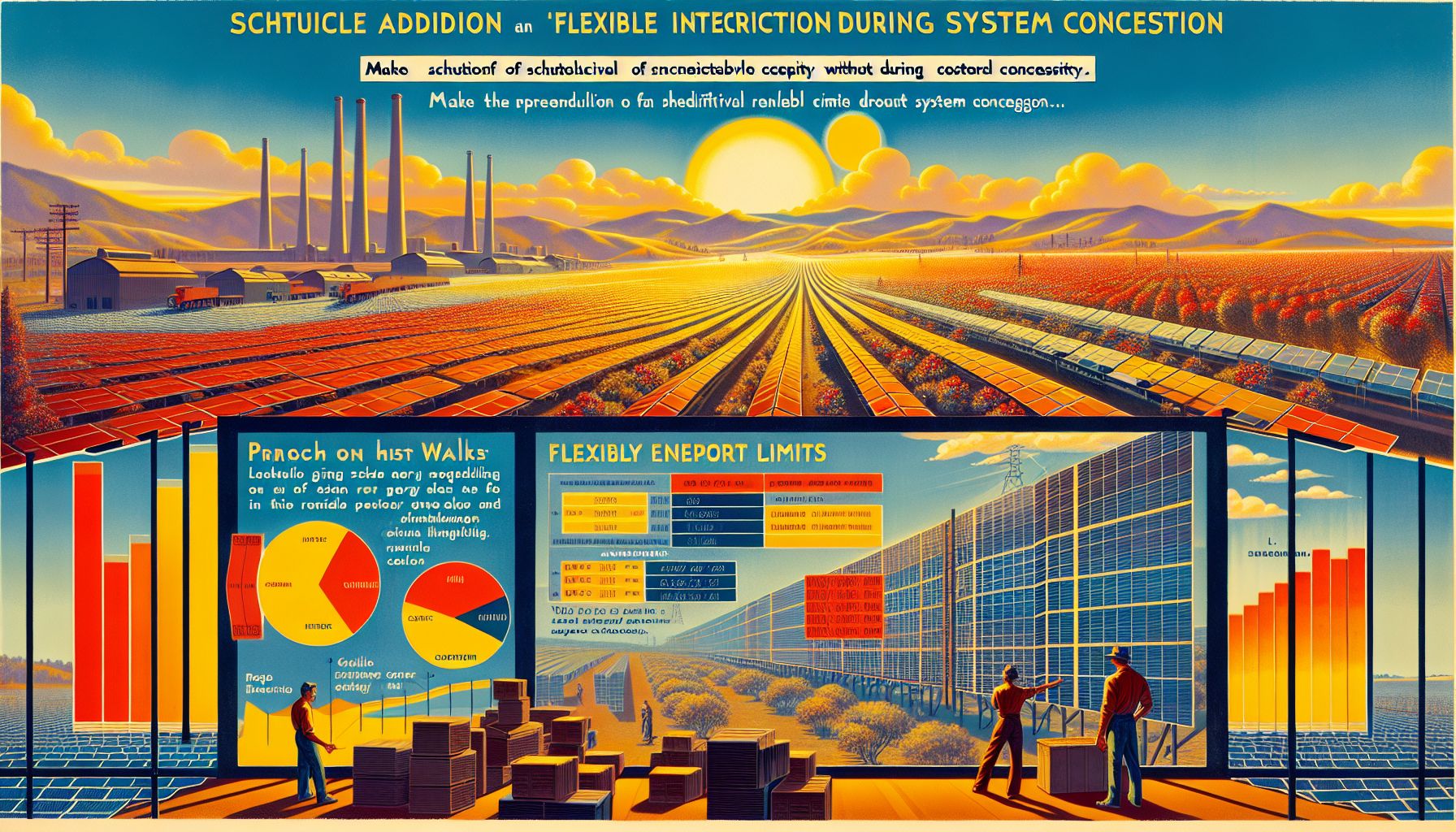California Pioneers Flexible Interconnection for Large-Scale Solar

California, Monday, 26 August 2024.
California is implementing innovative ‘flexible interconnection’ methods for large distributed energy resources like community solar. The Limited Generation Profile option allows scheduling of export limits during system congestion, potentially adding significant renewable capacity without costly upgrades. Other states are following suit, signaling a shift in grid integration strategies.
Addressing System Congestion
The Limited Generation Profile (LGP) option, approved on March 24, 2024, is a crucial part of California’s new approach to interconnection. This option enables developers to schedule export limits during periods of power system congestion, effectively protecting the grid against overloads. According to Sky Stanfield, an attorney for the Interstate Renewable Energy Council (IREC), this measure can prevent the grid from being overwhelmed during peak demand times.
Economic Implications
The economic benefits of the LGP option are significant. The California Public Advocates Office reported in April 2023 that distribution upgrade costs are generally doubling developer costs in states like New York. By allowing a more flexible interconnection approach, California aims to make DER projects more economically viable. This is especially important for projects in the 1 MW to 5 MW range, which can meet electricity demand spikes without requiring substantial system upgrades.
National and International Interest
Other states are closely watching California’s progress. Policymakers in New York, Illinois, and Colorado are also moving toward more flexible interconnection practices. Colorado’s Senate Bill 24-218, approved by Governor Jared Polis on May 22, 2024, calls for the modernization of energy distribution systems. Xcel Energy plans to finalize a small-scale demonstration pilot within six months to evaluate the policy and technical considerations for broader deployment.
Challenges and Future Directions
Despite the promising outlook, there are challenges to be addressed. Advanced communications and Distributed Energy Resource Management Systems (DERMS) are required to manage unscheduled curtailments, as noted by David O’Dowd, a spokesperson for Commonwealth Edison. Furthermore, the dynamics of power system operations make precise curtailment forecasting problematic, according to Nadav Enbar, Program Manager at the Electric Power Research Institute (EPRI).
Collaborative Efforts
California is not acting alone. The Los Angeles Regional Collaborative (LARC) DER Data Access Working Group, funded by the California Public Utilities Commission (CPUC), is facilitating workshops to enhance customer management of energy use through utilities and load-serving entities. These workshops aim to improve data access related to DER objectives, which will ultimately support the state’s flexible interconnection initiatives.
Conclusion
California’s pioneering efforts in flexible interconnection for large DERs are setting a precedent for other states and countries. By addressing system congestion and economic viability, these initiatives aim to integrate more renewable energy sources into the grid efficiently. As other states begin to adopt similar practices, the potential for a more resilient and sustainable energy future becomes increasingly attainable.
Bronnen
- www.utilitydive.com
- www.epri.com
- www.gridtechconnect.com
- www.laregionalcollaborative.com
- climatebase.org
- press.siemens.com

